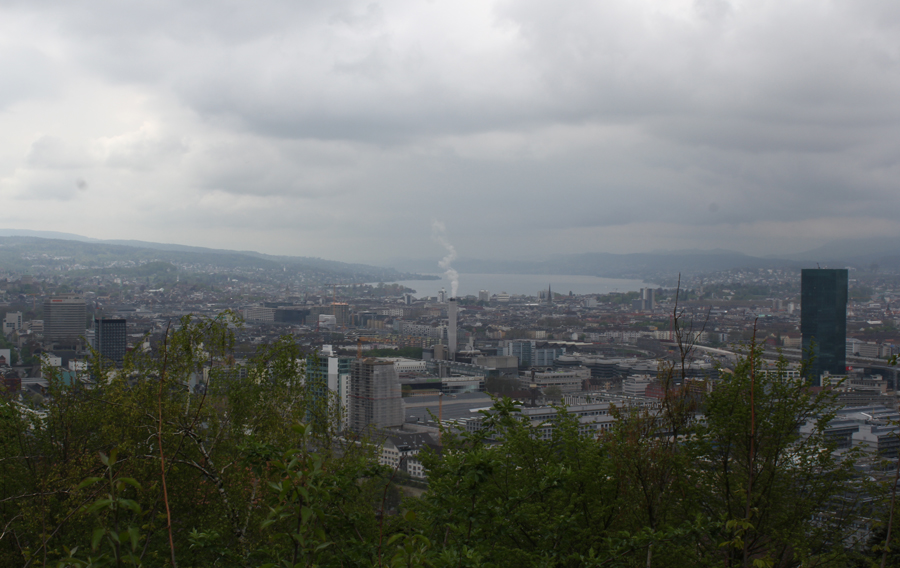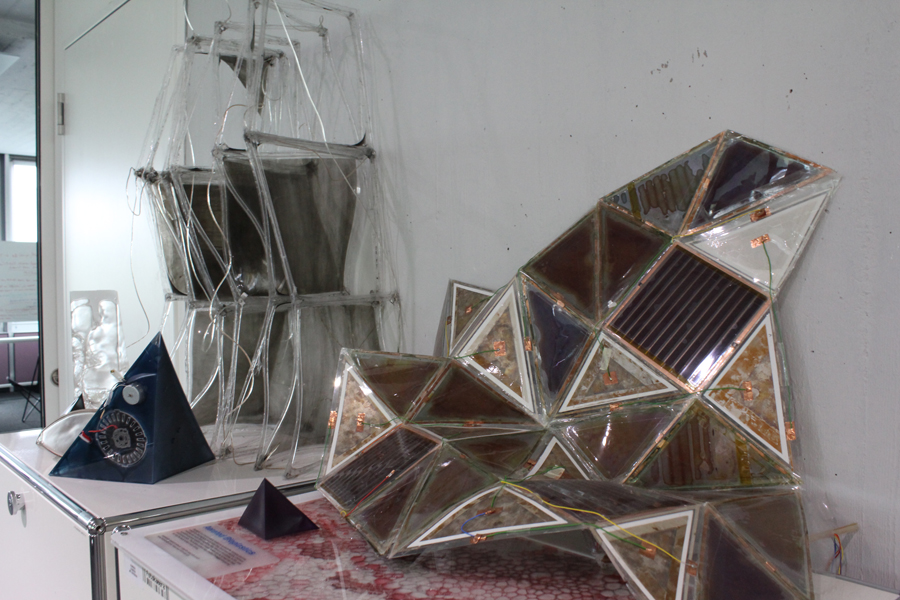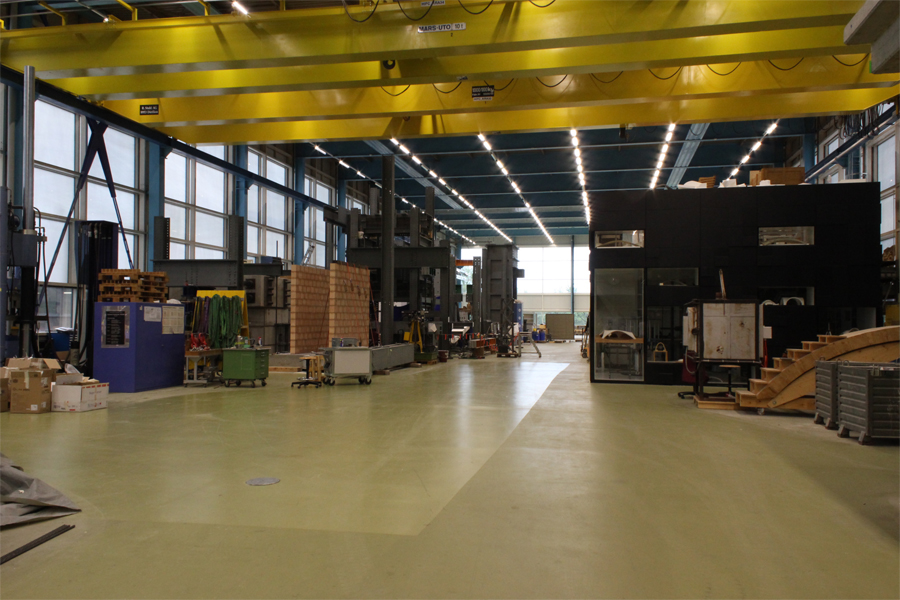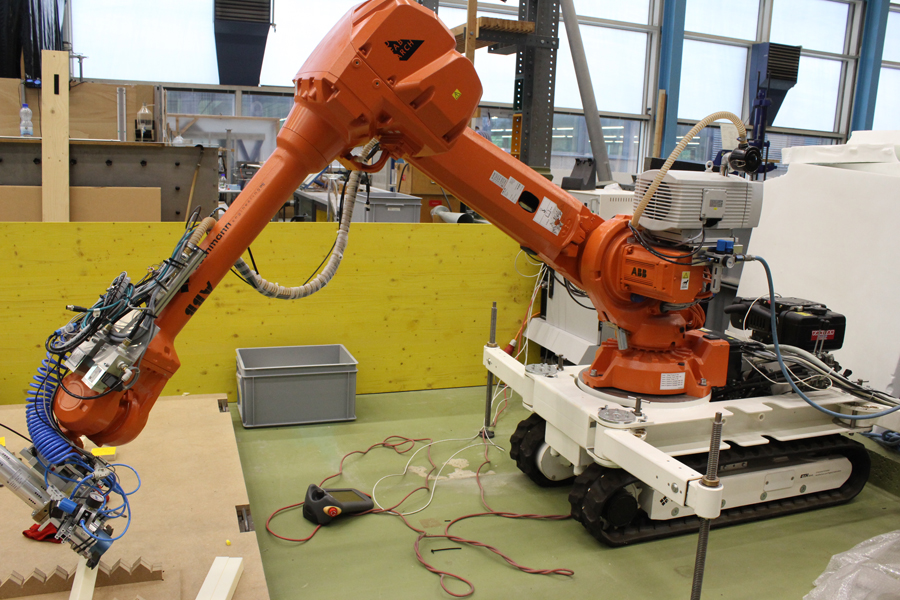Architectural education in Switzerland: Waterloo Architecture student Sam Oswald documents a visit to the ETH Zurich.
The hill is small, by Swiss standards. Still, as the bus reaches the top, the view over Lake Zurich and the surrounding Alpen foothills is impressive. Up here is the largest part of the campus of the ETH Zurich. The Eidgenössische Technische Hochschule is one of two technical universities in Switzerland, with courses in engineering, science, and architecture. Cows graze lazily in front of the lab buildings. The crab-apple trees are in bloom. However, the pastoral appearance disguises powerful facilities and research groups that “regularly appear at the top of international rankings as one of the best universities in the world.”1
I am here to visit the Institut für Technologie in Architektur (ITA), an institute in the architecture faculty that focuses on digital fabrication and materials research. The visit begins in their office, which in layout resembles an office in any regular architecture firm. Post-graduate researchers gather around the espresso machine. A student in the corner is soldering electronic circuits. Printed and laser-cut prototypes inhabit every free surface.
My guide, Manuel Kretzer, coordinates the post-graduate course in digital design and production. His research focus is on prototyping smart materials; in fact, we met at the Prototyping Architecture conference. He shows me some of the tests his students have been doing with photo-sensitive materials.
The office is compact, with only one small 3d printer. Most of the fabrication equipment is found in the main architecture building. It is probably twice as big as Waterloo’s building, with four floors, but still the ITA was moved out for lack of space. In the basement, long corridors are lined with rooms containing woodworking tools, CNC milling machines, and laser cutters. The laser cutter room has five machines that are available for the whole school – but on a first come, first serve basis. Manuel tells me that sometimes at deadline time students camp out in front of the door in order to have their first choice of machine in the morning.
We then enter the high-ceilinged warehouse shared by engineering and architecture. Concrete beams with their failures traced in marker are stacked to one side. In the middle, a space has been cleared for an orange robot arm mounted on treads. This assembly has been designed to fit through the width of a standard doorway on a construction site. It is part of a project by researchers Fabio Gramazio and Matthias Kohler, who hope to integrate robotic fabrication with on-site assembly. Today, though, this robot is stationary, working only a small piece of foam. Farther on, a larger robot arm is poised to polish a piece of wax formwork. This is another research interest of Gramazio & Kohler; wax can be used to cast custom concrete pieces, and then melted for reuse.
The robots are powerful tools, with six axes of motion (the “arm”) and an interchangeable head (the “hand”). Their capability to produce precise custom work has attracted international recognition for Gramazio & Kohler. Manuel’s interest, though, does not lie in the technology but in the process of fabrication. He says that the ITA has access to another robot arm, far from the university. He prefers it because there is no supervision and they can simply hack together the tools they need.
“For one construction, we just attached a regular jigsaw as the robot’s hand and used it to cut aerated concrete. We ended up ruining ten jigsaws – but it was still much less expensive than a professional tool bit.” It is important to remember that the robot is only as smart as the person who operates it. Although the powerful technology is an advantage, it not as important as the students’ and professors’ spirit of improvisation, resourcefulness, and creativity.
1 http://www.ethz.ch/about/index_EN







Leave a Reply